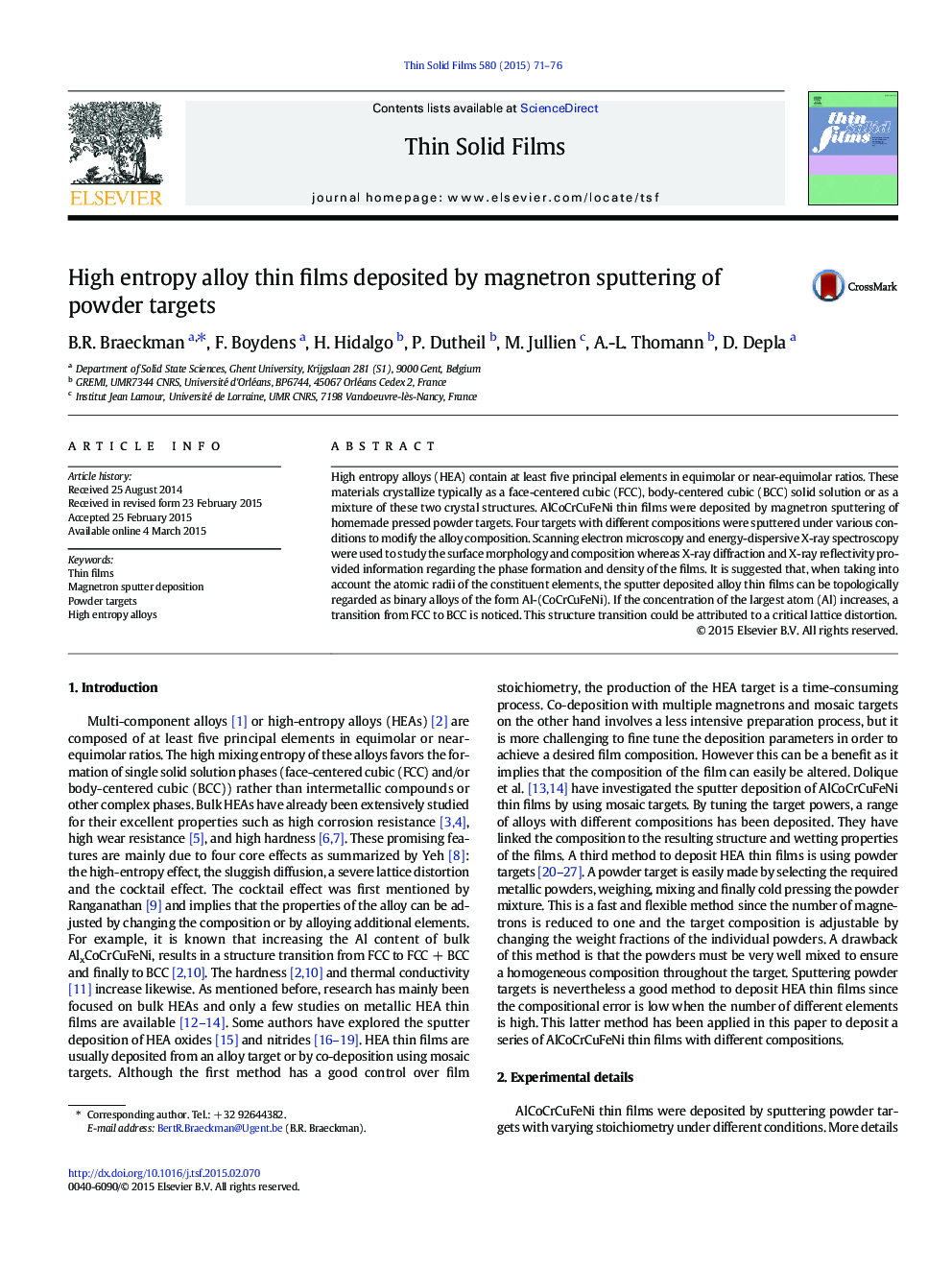| Article ID | Journal | Published Year | Pages | File Type |
|---|---|---|---|---|
| 1664772 | Thin Solid Films | 2015 | 6 Pages |
•AlCoCrCuFeNi thin films were deposited by sputtering pressed power targets.•Sputter deposition of powder targets allows good control over the film composition.•With increasing Al fraction, a crystallographic structure transition was noticed.•The transition was made semi-quantitative with Egami's atomic-level stress theory.
High entropy alloys (HEA) contain at least five principal elements in equimolar or near-equimolar ratios. These materials crystallize typically as a face-centered cubic (FCC), body-centered cubic (BCC) solid solution or as a mixture of these two crystal structures. AlCoCrCuFeNi thin films were deposited by magnetron sputtering of homemade pressed powder targets. Four targets with different compositions were sputtered under various conditions to modify the alloy composition. Scanning electron microscopy and energy-dispersive X-ray spectroscopy were used to study the surface morphology and composition whereas X-ray diffraction and X-ray reflectivity provided information regarding the phase formation and density of the films. It is suggested that, when taking into account the atomic radii of the constituent elements, the sputter deposited alloy thin films can be topologically regarded as binary alloys of the form Al-(CoCrCuFeNi). If the concentration of the largest atom (Al) increases, a transition from FCC to BCC is noticed. This structure transition could be attributed to a critical lattice distortion.
